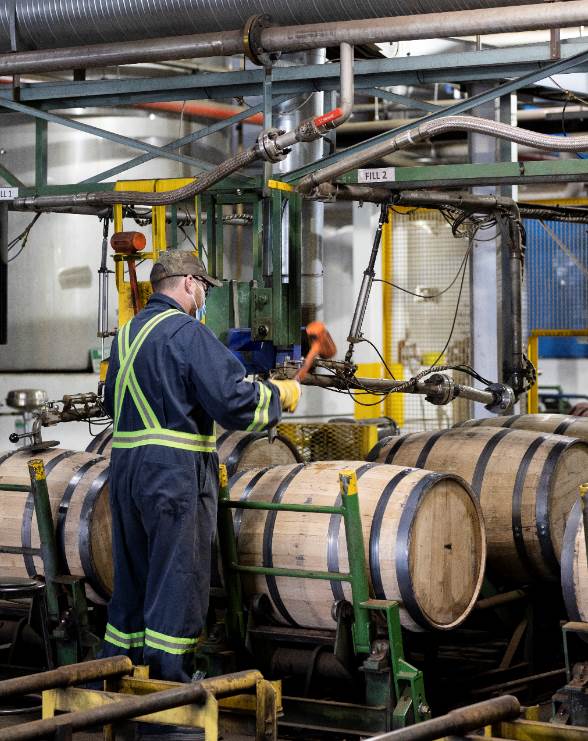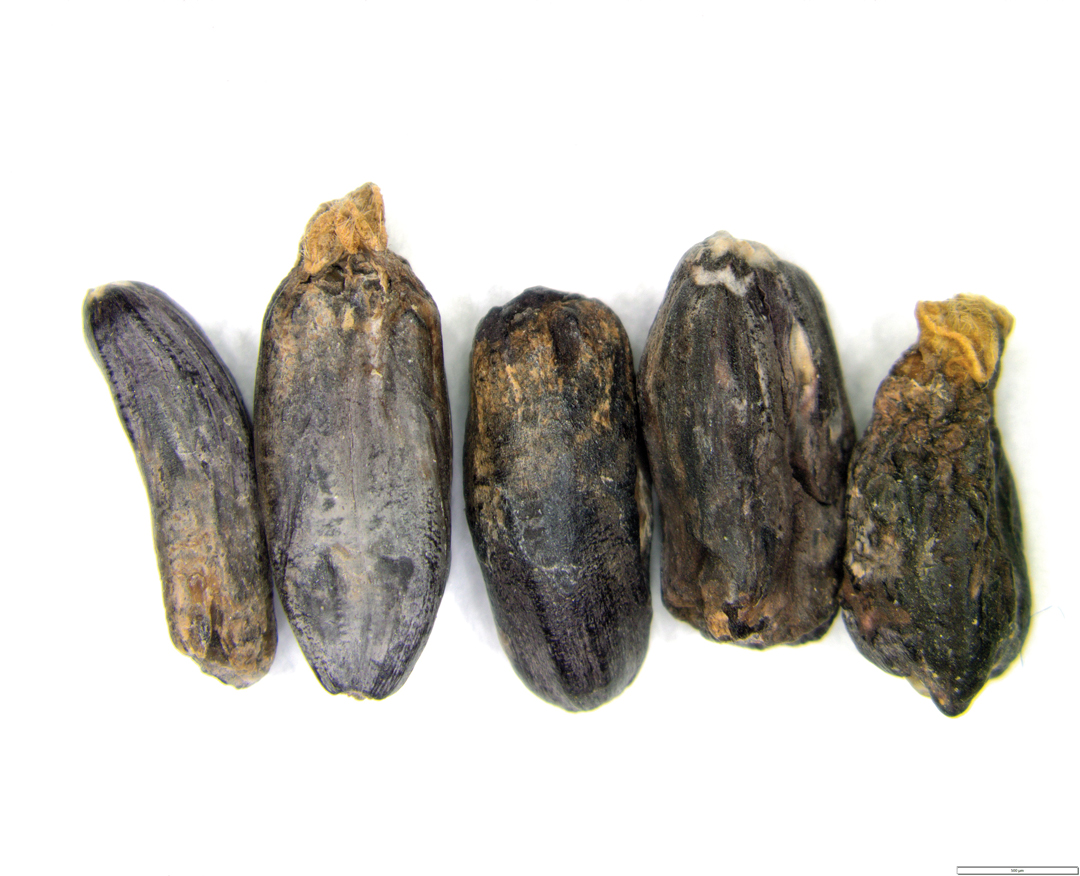DISTILLATION TAX BREAK CONTROVERSIAL
BY IAN DOIG • PHOTO OF RYE: PIXABAY
A large Alberta distiller, Canada’s national spirits industry association and the Alberta Wheat and Barley Commissions are concerned a generous provincial distillation subsidy will prove a double-edged sword. In its current form, they say, it may eliminate the incentive for small distillers to use Alberta grain, flood the market with cheap out-of-province alcohol and harm the entire spirits value chain.
The province’s commercial distillers add value to approximately 45,000 tonnes of Alberta-grown wheat, barley and rye each year. Their products are consumed within the province, but also represent 90 per cent of Alberta beverage exports. Distillers also play an important economic role in their home communities.
In aid of the sector, the previous NDP government reduced the markup imposed by Alberta Gaming, Liquor and Cannabis (AGLC) from $13.76 per litre to $2.46 per litre. The significant break applied to distillers marketing less than 250,000 litres of finished product annually.
In March of 2020, the UCP government adjusted the policy to eliminate the requirement that subsidy recipients use grain produced within the province. Businesses that import and blend alcohol produced outside of Alberta now qualify. Large distillers continue to pay the full markup.
In an email statement, an AGLC spokesperson said the markup subsidy was changed to eliminate unnecessary red tape for Alberta liquor manufacturers. This included the elimination of limits to the amount of product liquor manufacturers are allowed to blend. The spokesperson said this has allowed many manufacturers to supplement their business with the production of blended products. “This extra flexibility has allowed manufacturers to adapt and remain viable, which is vital, especially in these challenging times. That said, the majority of distillers continue to produce spirits starting from raw ingredients.”
“Government’s desire to help new, small businesses get established is understandable, even laudable,” said Jan Westcott, Spirits Canada executive director. “But, providing permanent subsidies to one group of producers at the expense of other producers in the same business seems both unfair and short-sighted.” He said the subsidy is inconsistent with Canada’s international trade obligations. He also said it undermines the export of high value-added Alberta-made goods while rewarding businesses that take advantage of the Alberta market without utilizing its agricultural resources or labour.
As an example, he said certain small firms import alcohol and, utilizing the markup subsidy, are able to sell it as a blended product in Alberta for $9.99 per 750 ml bottle, paying “little or no tax.” Larger distillers cannot match this, as they pay $10.32 in tax alone on the same volume of product.

Based in Calgary, Alberta Distillers employs more than 100 people. In 2020, 91 per cent of the grain used by the business was grown in Alberta. This includes wheat and, predominantly, rye. A sterling example of value-added agricultural processing, its signature ingredient, Alberta-grown rye, plays a central role in the company’s branding. Promoted by the company as the world’s number 1 selling 100 per cent rye whisky, Alberta Premium has received multiple industry awards. Alberta Distillers was also named distillery of the decade by the Canadian Whisky Awards.
George Teichroeb, Alberta Distillers general manager, said the distiller, which is Alberta’s largest, contends with “tax-related headwinds” smaller distillers do not. “My view is if the business has a distillery license and they produced the spirit, maybe a break in the AGLC markup is valid,” said Teichroeb. However, he believes businesses that purchase cheap alcohol from outside the province as “side hustles” ought to be subject to the full markup.
Teichroeb said demand for Alberta Distillers’ premium whisky products is good, but if the markup subsidy structure stands as is, the company may be forced to re-evaluate which sales markets it prioritizes.
In mid-April, Tom Steve, Alberta Wheat and Barley Commissions general manager, sent a letter expressing the organizations’ concern over the change to Minister of Agriculture and Forestry Devin Dreeshen and Minister of Finance Travis Toews. “This cuts off the value-added linkages to Alberta grain farmers and the cheap alcohol these operations produce is expected to flood the market jeopardizing the current and any future investments in commercial distilleries in Alberta and ultimately, purchases of grain,” the letter reads.
Steve requested the March 2020 adjustment to the subsidy be repealed and the $2.46 markup be made available only to small distillers that utilize 100 per cent raw product distilled at their facilities in Alberta.
Late in April, Spirits Canada submitted a $10 per barrel tax credit proposal to the Alberta government and framed it as a potential economic boost for the province’s value-added ambitions as well as grain sales. Aiming high, the organization envisions the potential transformation of Alberta’s value-added distilling sector into “the world’s ‘headquarters’ for high quality Canadian rye whisky.”
Spirits Canada cites 2020 Alberta whisky sales of $317 million and exports of $72.6 million and an annual industry contribution of $740.2 million to Alberta’s GDP that represents more than 1,000 jobs. The organization suggests the value-added investment spurred by the tax credit would boost GDP by $48 million and create a handful of new jobs. Were Alberta to double whisky exports, however, it predicts a resulting $138 million jump in GDP and the creation of 190 jobs. The latter goal would see distillers utilize 90,000 additional tonnes of Alberta grain.
The proposed barrel credit would apply to whisky produced in-house by Alberta distillers of any size. Spirits Canada suggests the resulting $9 million break would create the incentive for distillers to invest further in value-added production. The cost associated with the requisite aging of whisky between three and 20 years is substantial, said Westcott. “The extent to which the Government of Alberta can aid in offsetting that risk will encourage distillers to produce and lay down more whisky in Alberta versus doing so in other whisky-making jurisdictions.”
Greater production, he said, will make Alberta distillers more competitive with global whiskies such as Bourbon, Scotch and Irish whiskies and increase the use of rye and other grains. “And, as more true grains-to-glass distilleries emerge across the province, the opportunity for enhanced tourism and attractions like a whisky trail become viable,” he added.
Ross Alger, Alberta Craft Distillers Association president, said the adjustment to the subsidy allows small distillers to compete in markets outside the ultra-premium whisky and vodka categories, which they previously could not. He stressed association members aim to make the best high-quality Canadian whisky made from Albertan grain. “We know that and that’s our unique value add to a global market.”
“And by being able to use blending, and other activities, we’ve been allowed to subsidize our whisky and another grain-based production,” said Alger.
He doesn’t believe the market will see an influx of cheap alcohol from outside sources. Many of the cheap products now on store shelves are produced by multinationals outside Alberta, but Alberta distillers now have the opportunity to compete within that market segment, he said. This will allow small distillers to grow and utilize more Alberta- and Prairie-made ingredients, he added.
“These changes have allowed us to grow exponentially in the last year,” said Alger. “Without it, we wouldn’t, and we would be using far less grain than we currently do.”
Alberta Craft Distillers is now at work on its own subsidy proposal. Alger said it will be a tiered subsidy based on annual worldwide production and factor in the amount of Alberta grain utilized. It would benefit small distillers most and large businesses the least. He also suggested this could be accompanied by, for instance, employment grants and grants that promote the use of Alberta grain.
“AGLC is excited to see the growth in the entire liquor manufacturing sector and the success of both big and small producers,” said the AGLC spokesperson. “We now have 56 spirits producers and 212 manufacturers in Alberta. These manufacturers would be the first to say that Alberta’s agriculture inputs and water are key success factors.”
The spokesperson conceded that the provincial government will not dismiss regulatory suggestions such as those made by the grain commissions and Spirits Canada. “The AGLC and government continue to analyze stakeholder suggestions for markup changes and support for this sector.”
“We are confident Alberta’s value-added food processing sector will continue to grow and thrive, benefiting farmers, distillers and everyone along the value chain,” said Justin Laurence, Alberta Agriculture and Forestry press secretary. “Alberta’s agriculture industry is coming off a record year and will be a crucial contributor to the province’s economic growth and recovery.”







Comments